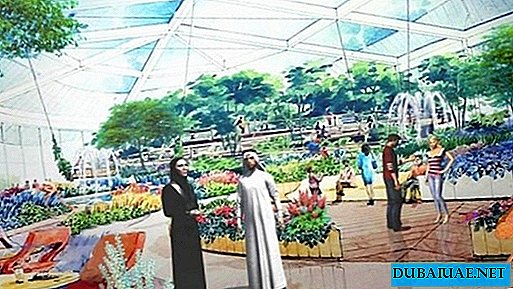 Text: Irina Malkova
Text: Irina Malkova RUSSIA ONLY BEGINS TO TAKE POPULARITY AS A TOURIST DESTINATION, AND IT HAS BEEN RICH AS SO RARE NATURAL RESERVES AND SO PICTURAL LANDSCAPES, WHICH IS READY TO TAKE IT OUT EVEN EVEN. WE HAVE DEPARTED TO THE CENTER OF THE COUNTRY, THE PLACE OF MERGING THE TWO BIGGEST RIVERS: VOLGA AND KAMA, TO THE REPUBLIC OF TATARSTAN.
The first thing you pay attention to when you arrive in Tatarstan is cleanliness, as well as the goodwill and hospitality of local residents. Almost everyone we met treated us like old acquaintances. Their faces shone with kind smiles, and from the very moment the flydubai airline, which operated direct flights from Dubai to Kazan, landed at the airport, people around did their best to make us feel at home. But in our time, to be among people who do not accept conventions and do not wear social masks is a rare pleasure.
In Tatarstan, we welcome every guest and are ready to guarantee his safety. And in fact, Kazan is becoming more and more popular among Russian and foreign tourists, especially after the Summit of the heads of the CIS countries was held here in 2005, and in 2013 the summer Universiade.
The 3.8 million population of the republic are ethnic Tatars, Russians, Chuvashs, Udmurts, Ukrainians, Bashkirs, Armenians, Uzbeks, Tajiks, Kazakhs and others (a total of 115 nationalities). Moreover, the republic is an amazing example of ethnic and religious tolerance, when all nations live in harmony with their neighbors - many countries, including the Middle East, can learn a lot here. The people of Tatarstan are so accustomed to consider themselves as a whole, that some kind of separation becomes noticeable only when adherents of different faiths go to pray. This is due to historical and geographical factors of the location of Tatarstan at the junction of two large civilizations: eastern and western, which largely explains the diversity of its culture. Even Chernyshevsky mentioned that the Eastern and European peoples coexisted here for so long that, influencing each other, in the end they formed something completely self-sufficient.
Kazan
Kazan (which means "cauldron" in Tatar) is called Istanbul on the Volga - here Europe and Asia look at each other with curiosity from the tops of church bells and minarets.
The capital of the Republic of Tatarstan is 150 years older than Moscow - in 2005 it celebrated its millennium. Once it was the land of the Volga Tatars - the Turkic people, whose history is usually associated with the hordes of Genghis Khan.
After the fall of the Golden Horde, Kazan was the capital of the powerful Kazan Khanate. In 1552, the troops of Ivan the Terrible captured the city, so in subsequent years the Russians settled this area, and the Tatars, who had lived here since ancient times, were squeezed out. Today, the population of Kazan is mixed, but the share of Tatars is about 43% and they are doing their best to maintain their original traditions.
 The Tatar language, for example, is official here, in schools it is studied without fail. All road signs in Kazan are in Russian and Tatar languages, and the Tatarstan flag can be seen here, perhaps even more often than Russian. The situation is the same with mosques - there are more of them than churches. The majestic Kul-Sharif mosque, named after the last imam who led the defense of Kazan against the troops of Ivan the Terrible, is the largest mosque in Europe; it also houses a rich collection of old books. During the last restoration - in 2005 - the original facade of the 16th century was restored, which was damaged by the soldiers of Ivan the Terrible.
The Tatar language, for example, is official here, in schools it is studied without fail. All road signs in Kazan are in Russian and Tatar languages, and the Tatarstan flag can be seen here, perhaps even more often than Russian. The situation is the same with mosques - there are more of them than churches. The majestic Kul-Sharif mosque, named after the last imam who led the defense of Kazan against the troops of Ivan the Terrible, is the largest mosque in Europe; it also houses a rich collection of old books. During the last restoration - in 2005 - the original facade of the 16th century was restored, which was damaged by the soldiers of Ivan the Terrible.
The Annunciation Cathedral on the territory of the Kazan Kremlin is an equally important Orthodox shrine and a real architectural pearl. The cathedral, as they say, was built in 1561, 9 years after the city was conquered, by none other than Postnik Yakovlev, the very architect who was blinded after he built the Cathedral of St. Basil the Blessed on Red Square in Moscow.
But the main attraction of Kazan is the grand Kremlin, which in 2000 was included in the UNESCO World Heritage List. When you look at its ancient whitewashed walls, ivory government buildings and the presidential palace, you are in awe. The Kazan Kremlin personifies not only the ethnic unity of the Tatar and Russian peoples, but also the single power of two religions - Islam and Orthodox Christianity.
Like many ancient cities, Kazan is full of legends. Among the other famous buildings of the Kremlin, the Syuyumbike tower, named after the mother of the last Tatar khan of Kazan, was notable for its unprecedented beauty. Although she was already over 30 years old, Ivan the Terrible, who came to conquer Kazan, was captivated by her charm. Unable to resist him, the king invited her to get married with a Christian marriage - an offer that Syuyumbike, as a Muslim, could not accept. In order not to incur the wrath of Ivan the Terrible on her people, she promised him that she would marry him if he built the tallest tower in the city in seven days. Grozny gave the order to his people, and they erected a seven-story tower - one floor on each day of the established term. Seeing that the king had completed the task, in sadness Syuyumbike went up to the tower, for the last time with tears in her eyes she glanced at her beloved city and took a step towards death. The Syuyumbike tower stands to this day, however, tourists are not allowed to climb it, because it, like the Leaning Tower of Pisa, despite all attempts to strengthen the foundation, began to roll.
The future of Kazan is obviously closely connected with its unique mixture of religions. In 1992, the sculptor Ildar Khanov began to build on the banks of the Volga the Temple of all religions, the construction of which has not yet been completed. The Temple combines elements of the architecture of religious buildings of 16 world religions - including Orthodox churches, minarets, synagogues and many others. Khanov, known for his social activities to combat social problems, lives in a church under construction, which functions as a cultural center. Many of those who help him in the construction of the Temple, previously participated in his social recovery programs. Khanov wants to erect in his native Kazan a beautiful monument to "culture and truth" - an ideal symbol for such a cosmopolitan city.
Today Kazan is a rich industrial city, a cultural and educational center, and Kazan State University is the second oldest university in Russia. Kazan also strives to become the sports capital of the state. Any fan knows the Rubin football club, and hockey fans are no doubt familiar with Ak Bars. In 2013, Kazan hosted the Universiade (Student Olympic Games), and in 2018 the finals of the World Cup will be held here. Which means that the influx of money to Kazan will grow, and the city will become increasingly attractive to tourists.
There are more than 30 higher educational institutions in Kazan, as well as museums, concert halls and theaters, including the Opera and Ballet Theater, where the International Festival of Classical Ballet is annually held. The festival bears the name of a native of Tatarstan, Rudolf Nuriev, a great dancer, who is rightly proud of the whole Tatar people.
Great Bulgarian
 Another attraction of Tatarstan is the Great Bolgar, located in a picturesque valley on the left bank of the Volga, which the residents themselves call the Northern Mecca. Now it is part of the Republic of Tatarstan, and earlier, in the VIII century, the city called Bulgar was the capital of the Volga Bulgaria and invariably attracted the attention of the Tatars. All the hillsides here are completely covered with minarets and domes of ancient tombs. They say that one ancient minaret in the 19th century was almost completely destroyed by excessively zealous treasure hunters, and now there is a belief among Tatars that one who goes around the ruins in a circle will certainly find happiness.
Another attraction of Tatarstan is the Great Bolgar, located in a picturesque valley on the left bank of the Volga, which the residents themselves call the Northern Mecca. Now it is part of the Republic of Tatarstan, and earlier, in the VIII century, the city called Bulgar was the capital of the Volga Bulgaria and invariably attracted the attention of the Tatars. All the hillsides here are completely covered with minarets and domes of ancient tombs. They say that one ancient minaret in the 19th century was almost completely destroyed by excessively zealous treasure hunters, and now there is a belief among Tatars that one who goes around the ruins in a circle will certainly find happiness.
It is curious that the city of Bolgar nevertheless found its happiness - it came here in the form of large-scale, government-funded restoration work of all archaeological sites and surrounding territories. In the 18th century, Peter the Great was so impressed by the ruins of the ancient city that he issued a decree to be supported in their current state. From the time of Peter the Great to the first president of Tatarstan, Mintimer Shaimiev, the city of Bolgar has always attracted the attention of the authorities - its spiritual and historical significance for the Tatar people is so great that the restoration of the city has always remained the most important political task. In 2014, the Ancient Bulgar, as well as the Kazan Kremlin, was included in the UNESCO World Cultural and Natural Heritage List.
Island-city Sviyazhsk
Traveling in Tatarstan will be incomplete without visiting Sviyazhsk, which is quite easy to explore on your own. Sviyazhsk is not so small, and although it is easy to get around on foot, such a walk will take you several hours. Now the city is being carefully restored, and literally every brick here can tell its own story rich in events. Perhaps today the city has lost its authenticity and has become too touristy, but this is a real huge open-air museum.
Due to its strategic position between Moscow and Kazan, the fortress island of Sviyazhsk served as an outpost of the troops of Ivan the Terrible during the siege of Kazan in the 16th century. Initially, the fortress was erected elsewhere, and then all the details were marked, disassembled, loaded onto ships and rafted along the Volga to Sviyazhsk, where they were reassembled in a record 24 days. The beautiful wooden Trinity Church built in 1551 is all that remains of those days. By the end of the XVIII century, Sviyazhsk from a military outpost turned into a small provincial town, which is at the same time an important religious center.
The most dramatic pages in the history of the island came in the 20th century, when the revolution turned Sviyazhsk into an abandoned village surrounded by correctional colonies, prisons for repressed and collective farms. Subsequently, a psychiatric hospital appeared here. In the late 80s, when the hospital was closed, several attempts were made to revive the city by setting up a settlement here, or the "commune" of artists. The picturesque landscapes, silence and leisurelyness of the village life seemed to be simply created in order to give inspiration to artists of all stripes. And today various artistic natures come here to calmly create in the lap of nature and away from the vain large megacities.
I want to end the article with a common Tatar proverb: “Tatars do not have the word“ back, ”they only have the word“ forward ”-“ alga. ”And if something is already going wrong, then the Tatars unfold and again - alga.” Moving forward is always a combination of different positions and different points of view, so that the modern world has something to learn from Tatarstan.









